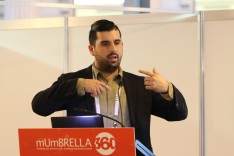Brands, beware: Instagram is going algorithmic
In this guest column George Pappas says Instagram’s decision to change its feed from chronological to ‘optimised’ via a new algorithm, challenges brands to refine their message and improve the quality of their content.
 Instagram last week announced a major update – their feeds are moving from a real-time chronological order of content, to an algorithmically optimised collection of content that you’d prefer to see.
Instagram last week announced a major update – their feeds are moving from a real-time chronological order of content, to an algorithmically optimised collection of content that you’d prefer to see.
According to the announcement on average we miss 70% of our feeds and as Instagram grows, so will the number of users we follow making the need for algorithmic optimisation more pertinent.
This is how Instagram explained how the feed order will adjust: “The order of photos and videos in your feed will be based on the likelihood you’ll be interested in the content, your relationship with the person posting and the timeliness of the post.


I do not follow any brands on Instagram. I do follow lots of people. Brands can ‘fck off my feed’…
@Rational Observer – you sound quite irrational.
Yes, content that is engaging will result in people clicking that like button, adding comments and sharing with their friends. This will keep that content relevant for that user. At the end of the day, the only people that won’t see what they used to are the ones who watch and don’t engage. The algorithim change highlights this unique benefit of IG over other social media platforms and in theory cut through should be better. Time will tell….
Instagram went back on their decision to implement this
A big difference is going to be for all the Instagram “models”, people like to look at their pictures and follow them, but don’t click “like” as they don’t want to pop up in people’s news feeds where it shows what friends have liked. The same is true of underwear brands etc. (Though my female friends don’t seem so embarrassed to be liking Aussie Bum posts…)
There’s no CTA so no “secret” metric to measure like CTR, and so this will likely be an issue for some.
Expect Instagram to introduce a “see more from this user” option sooner or later.
@Anon
In your eyes, (perception is in the eye / brain of the beholder).